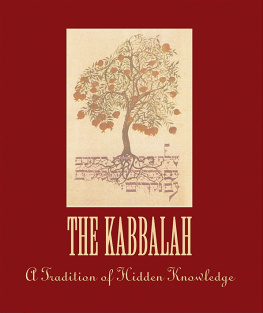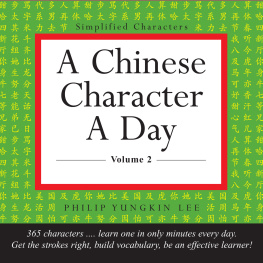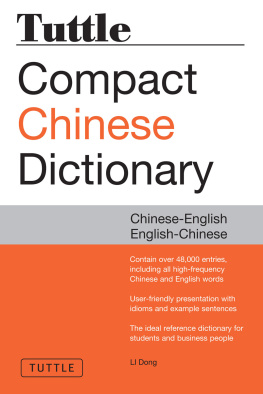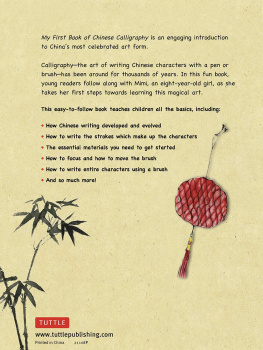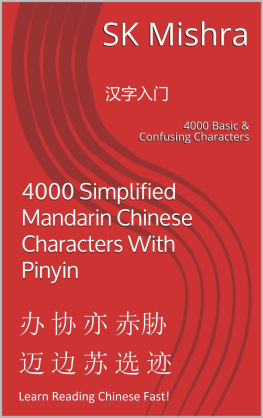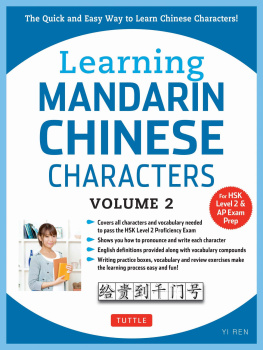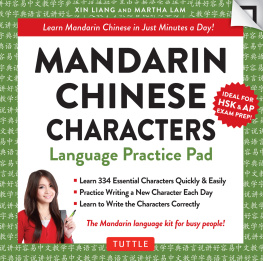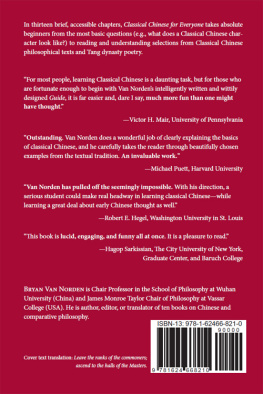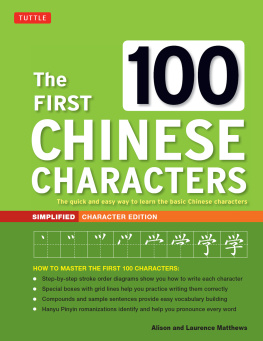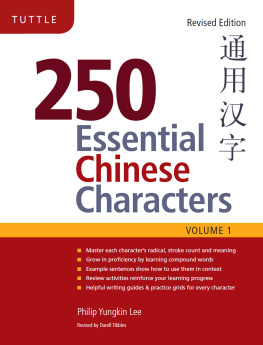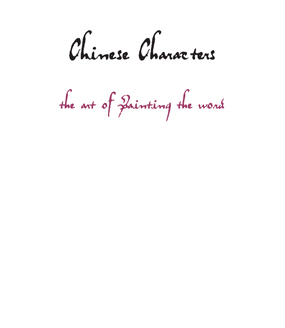Chinese Characters: The Art of Painting the Word Copyright 2002 by The Book Laboratory Inc.All rights reserved.
No part of this book may be used or reproduced inany manner whatsoever without written permissionexcept in the case of reprints in the context of reviews.
Andrews McMeel Publishing, LLC
an Andrews McMeel Universal company
1130 Walnut Street, Kansas City, Missouri 64106
www.andrewsmcmeel.com
Design by Jim Benson
ISBN: 0-7407-2895-4
Attention: Schools and Businesses
Andrews McMeel books are available at quantity discounts with bulk purchase for educational, business, or sales promotional use. For information, please e-mail the Andrews McMeel Publishing Special Sales Department:
Contents
Legends Concerning the
Origins of Writing
Historical Evidence
of Writing
Development of the Tools
Used in Writing
Characters That
Communicate Ideas
Evolution of Written
Characters


The Chinese art of painting the word is called calligraphy. It is an ancient art, rooted in the world of the spirit and deeply related to poetry.
We use words to talk about the state of the heart and to communicate that which is dif?cult to comprehend. To remember these feelings and to preserve them, we write them down.
Thus it is that through words the heart is heard, and through the painting of these words that the heart is seen.
Master Yang

Each painted word in this remarkable art is a series of brush strokes on paper and every stroke is the result of a direct link between the heart that feels, the eye that sees, and the hand that holds the brush.
Originally used to evoke responses from the gods, it has long been felt that writing has the power not only to communicate but also to transform reality.

Writing can save teetering governments and weak armies; it gives voice to the dying wind of human virtue.
Lu Ji (261303)


With each stroke of a brush on paper, subtle emotions are conveyed. Thick or thin, with force or with grace, statements are made that the practiced eye reads into every character.
The sheet of paper is a battleground;
the brush: the lances and swords;
the ink: the mind, the commander-in-chief;
ability and dexterity: the deputies;
the composition: the strategy.
By grasping the brush the outcome of the battle is decided: the strokes and lines are the commanders orders; the curves and returns are the mortal blows.
Wang Xi Zhi (321379)
Heres how the painted word inspired Suo Jing (229303):
Quivering like a startled phoenix,
Not yet aloft, wings spread,
Ready to rise,
It returns to a state of rest.
Insects and snakes coiled and poised:
Some advancing, others retreating,
Some fragile, soft and willowy,
Others aggressive, charging forward.
Wandering freely, this way and that,
Suddenly upright, suddenly twisted.
An outstanding steed bolts in anger,
Struggling against the bridle.

Whats the difference between poetry and prose? Wang Jilang asks Wu Qiao in the famous text Answering Wang Jilangs Questions on Poetry . Wu Qiao answers that a writers message is like rice:
When you write in prose, you cook the rice. When you write poetry, you turn rice into rice wine. Cooking rice doesnt change its shape, but making it into rice wine changes both its quality and shape. Cooked rice makes one full, so one can live out ones life span.
Wine, on the other hand, makes one drunkmakes the sad happy and the happy sad. Its effect is sublimely beyond explanation.



There are several Chinese legends that tell about the origin of writing.
One tells of Fu Xi, the ?rst of the ?ve emperors from a period that is now steeped in legend. Living 5,000 years ago, Fu Xi is credited with the invention of rope, ?shing and hunting nets, musical instruments, and the eight trigrams. He taught men how to use ?re, to cook food, and how to raise and tend livestock.
Fu Xi, it is said, was searching for the secrets of life. He was convinced that everything was governed by one universal law and he devoted his life to discovering the secret. One day as Fu Xi was meditating by the Li River, a dragon leapt out of the water. Fu Xi noticed that the dragon had strange markings on its back and he drew these markings in the sand in order to study them.


One day as Fu Xi was meditating by the LiRiver, a dragon leapt out of the water. Fu Xinoticed that the dragon had strange markingson its back and he drew these markingsin the sand in order to study them.
Gradually Fu Xi began to realize that these markings held the clue he had been looking for. From them he devised eight trigrams that contain the secrets of all the various cycles of life and of changes that take place in nature and in the human spirit.
In a commentary to The Book of Changes, one of the worlds oldest books, there is a passage that reads as follows:
Fu Xi inspected everything under the sky. He looked upward and admired the splendid designs in the heavens, he looked down and observed the structure of the earth. He noted the elegance in the shapes of birds and animals and the integrity of their ways. He studied his own body and cycles of life. He invented the eight trigrams in order to explain the changes that take place in nature and to help mankind understand the essence of things.


